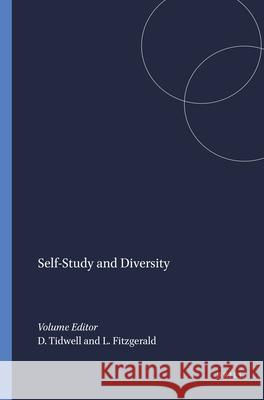Self-Study and Diversity » książka
Self-Study and Diversity
ISBN-13: 9789077874349 / Angielski / Miękka / 2006 / 312 str.
Educators have a responsibility to address equity and access issues inherent in teaching. To that end, individual chapters address such areas of diversity as race, ethnicity, gender, disability, and power, as well as broader areas of social justice, multiculturalism, and ways of knowing. (Education/Teaching)
Self-study and Diversity is a book about self-study of teaching and teacher education with equity and access as focal issues of practice. Chapters in this book have a shared orientation to diversity grounded in the acknowledgement that educators have a responsibility to address equity and access issues inherent in teaching. To that end, individual chapters address such areas of diversity as race, ethnicity, gender, disability, and power, as well as broader areas of social justice, multiculturalism, and ways of knowing. Even though the focus in a chapter may be on one particular dimension of diversity, the dilemmas and responses of a teacher educator, elicited through self-study, can apply well beyond that immediate context. This broadens the appeal of the book beyond the self-study community and beyond specific issues of diversity, to people interested in teaching in general and in the process of improving practice. The chapters of the book are organized in five sections, with each section containing similar self-study approaches. These self-study approaches were specifically chosen by the researchers as effective avenues toward understanding the complex dynamics inherent in their diversity contexts. Section one comprises autobiographical research, drawing readers in through life stories. In section two the autobiographical method is grounded in explicit theory. Section three takes the reader into classrooms where practices of teaching and learning are illuminated. In section four, collaboration is highlighted as the focal point within classroom-based self-studies. In section five, self-study is supported by the use of artifacts and visual representation.An additional strength of this book is the inclusion in each chapter of information regarding the use of particular strategies, both for self-study and for teaching for diversity.











